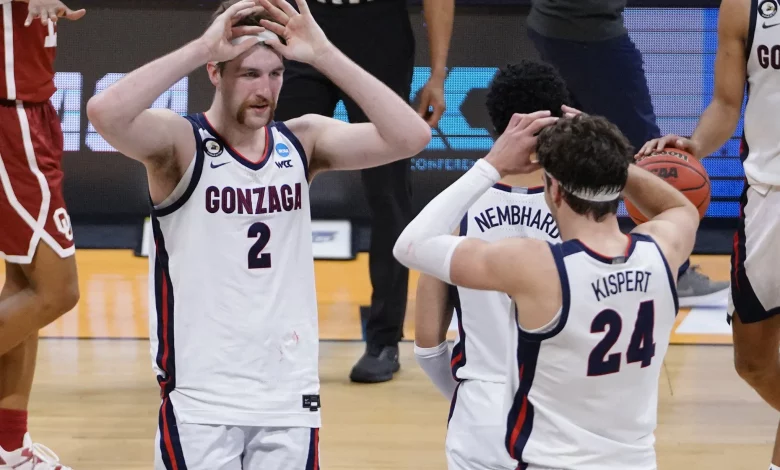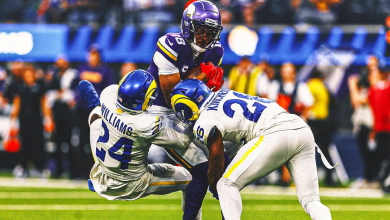NCAA revenue sharing begins, impacting Louisville Cardinals and Kentucky Wildcats by potentially increasing funds, altering recruiting, and shaping future competitiveness in college basketball’s evolving financial landscape.

The NCAA’s recent shift toward revenue sharing marks a pivotal moment in college sports. Historically, college athletic programs, especially those in major conferences, generated significant income primarily through television rights, tournaments, and sponsorships. However, the distribution of these funds has often favored a select few, leading to disparities among programs.
With the advent of NCAA revenue sharing, especially affecting high-profile programs like the Louisville Cardinals and Kentucky Wildcats, the college basketball landscape is poised for transformation. This change could influence financial stability, recruiting strategies, competitive balance, and institutional priorities.
This analysis explores what NCAA revenue sharing entails, its implications for Louisville and Kentucky, and the broader trajectory of college basketball amidst this financial evolution.
The Evolution Toward Revenue Sharing in NCAA
Historical Context
Traditionally, NCAA revenues, especially from the Division I Men’s Basketball Tournament, have been distributed unevenly. The NCAA distributes a significant portion of the tournament’s revenue to member schools, conferences, and related entities, but the distribution formulas often favored schools with larger media markets and higher revenue-generating programs.
Major programs like Kentucky and Louisville, with their storied histories, large fan bases, and successful teams, have historically benefited from lucrative postseason runs and national exposure. However, the bulk of revenue was often concentrated among Power Five conferences and top-tier programs, creating disparities.
The Shift to Revenue Sharing
Recent developments signal a move toward more equitable revenue distribution. This includes:
- NCAA’s New Revenue Sharing Models: Implemented to ensure more equitable distribution across member schools.
- Name, Image, and Likeness (NIL) Regulations: Allowing athletes to monetize their brands, further complicating revenue streams.
- Conference Revenue Pooling: Some conferences are exploring or adopting revenue-sharing models among member schools, promoting financial equity.
The Rationale
The NCAA’s shift aims to:
- Promote competitive balance.
- Reduce disparities between high-revenue and lower-revenue programs.
- Foster a more sustainable and equitable college sports environment.
- Address legal and societal pressures for fair compensation and financial transparency.
Immediate Effects on Louisville Cardinals and Kentucky Wildcats
Financial Impact
Both Louisville and Kentucky are prominent programs with rich histories and large fanbases. They benefit from lucrative television contracts, postseason success, and strong recruitment pipelines.
Potential benefits include:
- Increased funding for athletic departments.
- Greater investment in facilities, staffing, and recruiting.
- Enhanced ability to compete nationally.
Potential challenges include:
- Redistribution of funds may reduce the overall revenue share for these programs if the NCAA adopts a more uniform or redistributive model.
- Conference revenue pooling may lead to a more level playing field but could also diminish the dominance of traditionally wealthy programs.
Recruitment and Competitiveness
Financial resources directly influence recruiting, facilities, and player development. Increased revenue sharing could:
- Enable Kentucky and Louisville to invest more in recruiting infrastructure.
- Allow for better player amenities and support staff.
- Help maintain competitive rosters against emerging programs.
However, if revenue sharing leads to a decrease in overall earnings or redistributes funds away from top-tier programs, it could temper their recruiting advantage.
Operational and Strategic Adjustments
Programs may need to:
- Reassess budget allocations.
- Increase focus on NIL partnerships to attract recruits.
- Enhance scouting and player development systems.
Moreover, programs might prioritize long-term sustainability over short-term competitive boosts, aligning investments with projected revenue streams.
Broader Implications for College Basketball
Competitive Balance
Revenue sharing aims to level the playing field, reducing the gap between powerhouse programs and mid-major schools. For Kentucky and Louisville, this could mean:
- Facing more competitive challenges from smaller programs with newfound resources.
- Necessitating innovation in recruiting, development, and game strategy.
- Potentially fewer dominant runs in NCAA tournaments.
Conference Dynamics
The financial landscape impacts conference alignments and rivalries:
- Conferences may negotiate collective media rights deals to maximize revenue distribution.
- Traditional rivalries like Kentucky-Louisville could be affected if conference realignment or revenue redistribution influences scheduling and competitiveness.
Player Compensation and NIL
Revenue sharing coincides with NIL rights, creating new opportunities and challenges:
- Kentucky and Louisville can leverage increased revenues to build robust NIL programs.
- They can attract top talent by offering lucrative NIL deals, supplementing traditional scholarships.
- Programs must develop compliance and management systems to navigate NIL complexities.
Institutional Strategies
Universities will need to:
- Balance athletic success with academic and institutional priorities.
- Develop comprehensive financial plans aligning with new revenue models.
- Foster community engagement and alumni support to maximize revenue streams.
Long-Term Outlook and Challenges
Sustainability and Equity
While revenue sharing promotes fairness, it also raises questions:
- Will the redistribution diminish the financial edge of elite programs over time?
- How will smaller schools leverage increased revenue to ascend competitively?
- Will the NCAA’s model encourage investment in non-revenue sports and academic programs?
Legal and Regulatory Landscape
Ongoing legal cases and legislative actions could reshape revenue sharing:
- Court rulings may influence how revenues are distributed.
- State laws affecting NIL and athlete compensation could alter financial dynamics.
- The NCAA may need to adapt its policies to remain compliant and competitive.
Potential for New Power Structures
If revenue sharing successfully promotes parity, we could see:
- A more diverse set of programs competing for championships.
- Reduced dominance by traditional powerhouses like Kentucky and Louisville.
- Increased unpredictability and excitement in college basketball.
Conversely, if revenue sharing diminishes the financial capacity of top programs, their dominance could fade, leading to a more competitive but less financially lucrative environment for established programs.
Specific Impacts on Kentucky Wildcats and Louisville Cardinals
Kentucky Wildcats
Kentucky’s brand relies heavily on recruiting top high school talent, strong fan support, and successful basketball history. Revenue sharing could:
- Enhance their ability to offer NIL opportunities and facilities upgrades.
- Help maintain their recruiting edge by providing better resources.
- Encourage more investment in analytics, coaching, and player development.
However, if revenue sharing reduces overall income or redistributes funds more evenly, Kentucky might face increased competition from programs with newfound resources.
Louisville Cardinals
Louisville’s strategic priorities include:
- Building competitive rosters.
- Investing in facilities and support staff.
- Developing NIL partnerships.
Revenue sharing could:
- Provide additional funds to support these initiatives.
- Enable them to better compete with conference rivals and national contenders.
- Encourage innovative recruiting tactics and program development.
However, if the financial landscape shifts unfavorably, Louisville may need to adapt quickly to maintain its competitive standing.
Navigating the New Financial Terrain
The implementation of NCAA revenue sharing signifies a transformative era for college basketball, with profound implications for programs like the Louisville Cardinals and Kentucky Wildcats. While the potential for increased funding and a more equitable landscape is promising, challenges remain.
Key takeaways include:
- Enhanced Resources: Both programs can leverage increased revenue to invest in facilities, NIL opportunities, and recruiting.
- Heightened Competition: Revenue sharing aims to reduce disparities, meaning Kentucky and Louisville will face more formidable competition from rising programs.
- Strategic Adaptation: Success will depend on how well these programs adapt their operational, recruiting, and financial strategies to the changing landscape.
- Long-Term Uncertainty: The full impact remains uncertain, contingent on how revenue sharing models evolve, legal developments, and the broader shifts in college sports.
Ultimately, Kentucky and Louisville are positioned to benefit from a more balanced and sustainable college basketball environment. Yet, they must remain agile, innovative, and forward-thinking to maintain their storied traditions and competitive edge in this new era of revenue sharing.









